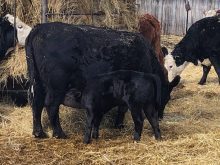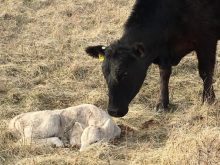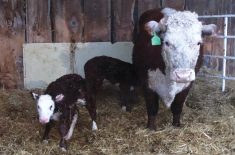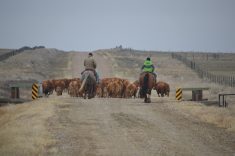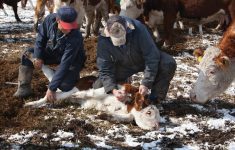Preparing for the calving season used to be simple. The best green hay was saved for the gestating cows about two months before they calved, and most people started to feed a bit of loose cattle mineral. The funny thing is that this simple program worked at the time.
As a beef nutritionist, it’s not something that I would exactly recommend to beef producers today, but the central idea of putting late-gestation beef cows on a higher plane of nutrition for a successful calving season is still sound.
Read Also

Harvest wraps up and fall work begins
At the Eppich famly ranch in western Saskatchewan, the fall harvest was successful with few breakdowns, cows and calves have been sorted and a new tractor has arrived
Such calving success becomes a matter of supplying enough dietary energy and protein to late-gestation cows to maintain or achieve a BCS of five to six (thin = one, and nine = obese) by calving time, while replacement heifers should calve out at a slightly better BCS. As a result, some of the benefits of calving cows out in prime condition are:
- Easier birthing process — fewer calving problems/calving assistance.
- Fewer post-calving metabolic problems — better cleaning, and fewer uterine infections.
- Produce more vigorous calves with better lifetime growth and reproduction.
- Better immune system for fighting viral and bacterial disease.
- Higher-quality colostrum — more immunoglobulins to be transferred to newborn calf.
- More milk at the start of the post-calving season.
- Quicker return to active estrus to get rebred.
In contrast, mature cows and heifers that calve out in a thin body condition (less than BCS of four) are not only susceptible to the challenges of a hard calving season, but their calves are likely to be weak, which often means lower-than-expected survivability.
Sample diets
Drawing upon these benefits of good nutrition until calving, I asked a few well-experienced cow-calf operators about diets that they fed to their late-gestation cows. Since the scope of my inquiry was very limited, I only talked to a handful of people that fed an overwintering TMR. The diet formulations (lbs./head/day) for four different beef herds are illustrated in the accompanying table below.

I calculated the TDN and protein of each diet and discovered that they all met or exceeded the respective NRC (2001) beef late-gestation cow requirements, namely: 55-58 per cent TDN, nine to 11 per cent protein. Furthermore, either a 2:1 or 3:1 beef cow premix was fed to complement the calcium and phosphorus of these formulas, which adequately suppled those nutrients as well as salt, trace minerals and vitamins.
Dry matter intakes were estimated at about 30-35 lbs. for these cow herds (including replacement heifers), which I would expect they would increase by 25-30 per cent during the onset of colder January weather. Lastly, I had no significant reservations about these diets, except that I felt that the smaller replacement cattle fed diet #3 might have difficulty consuming all 60 lbs. of feed, However, this producer assured me that it wasn’t a problem.
Regardless as to the type of diet fed above or elsewhere, it’s a good idea that a midwinter forage/feed inventory is taken. For example, two of the producers that feed only alfalfa-grass hay and straw as the foundation of their late-gestation (and post-calving) diets told me that because of last summer’s drought, they had just enough bales until end of April. I just hope that beside what their cows consume and waste (about 15 per cent), they factored in about a five to 10 per cent storage waste for hay and straw bales stored under a hay shed, while the same stacks housed outside and exposed to the elements might have 15-20 per cent storage loss.
It might be a race against time for such producers, but all late-gestation feeding programs are a prerequisite to a good calving season. Although we have more types of forages and other feedstuffs available to formulate good pre-calving diets for the cow herd, the basic cow nutrient requirements to maintain adequate body condition at calving haven’t significantly changed over the years. Therefore, saving your best nutrition for late-gestation cows still works today.




